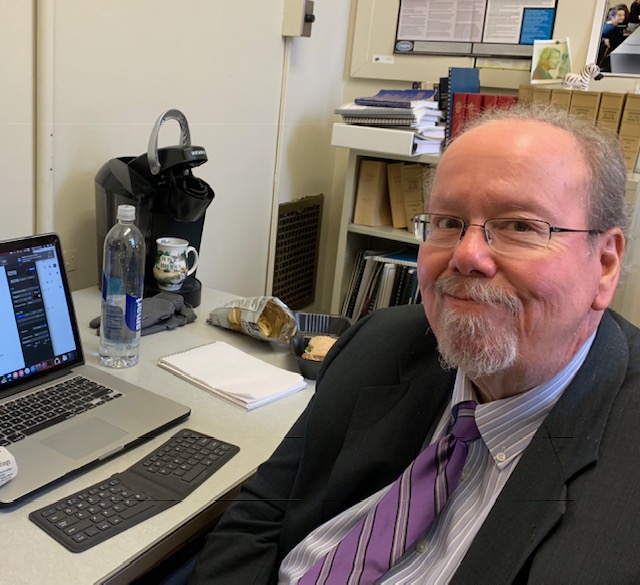
By GARRY RAYNO, Distant Dome
The federal government wants to give New Hampshire $43.5 million to broaden the reach of solar power to low and moderate-income families.
One of the often-heard criticisms of net metering, which allows homeowners with solar panels to sell their unused electricity to electric utilities, is only the well-to-do or connected folks who can afford to install the panels without tax breaks or credits benefit from the program, not the poor and lower-middle class.
Some tried to remedy that by allowing communities to benefit with larger scale solar arrays for towns or school districts that would lower electric costs in a kind of trickle down arrangement.
Another impediment to reaping the benefits of solar energy is the slow process that many projects endure connecting to the grid as utilities have other priorities like upgrading the transmission system infrastructure.
Senate Bill 391 attempted to address that problem this year and did make it into law, but as passed, simply requires the state Department of Energy to begin drafting uniform rules to connect distributed energy resources like solar arrays to the electrical infrastructure.
That is not going to be an immediate help to the many projects sitting in the queue waiting to flow their generated energy onto the grid.
Larger projects require an interconnection study to determine if the additional energy will fit into the electric system which needs to be “balanced” or in other words if additional lines or transformers etc. would be needed to accept the additional power.
The situation was frustrating enough for some small-scale developers that three of them filed a complaint about Eversource to the Department of Energy.
The three developers claimed earlier this year the utility was not following state laws concerning small-scale energy projects and costing public entities savings on electric bills and benefiting everyone by reducing greenhouse gas emissions.
The backlog has hovered around the 500 megawatts worth of projects which is substantial.
Individual homeowners with solar arrays do not require the same kind of studies to allow their power to flow onto the grid, but do have to ensure the proper connections and configurations to reap their benefit which is mostly in savings on the energy portion of their electric bill.
The Joint Legislative Fiscal Committee will vote whether to accept the $43.5 million from the US Environmental Protection Agency under the Inflation Reduction Act Friday.
The national “Solar for All” program distributed $7 billion to 60 applicants, including New Hampshire, and is under the $27 billion Greenhouse Gas Reduction Fund program in the Inflation Reduction Act.
The New Hampshire application was a joint effort of the NH Department of Energy, The NH Community Loan Fund and the NH Housing Finance Authority.
According to the federal award, the program is intended to bring the benefits of residential-serving community solar to those least able to afford it.
The Community Loan Fund will use their existing program for residents of manufactured housing parks to buy their parks and convert them into cooperatives. The loan fund will help the cooperatives to install solar arrays in their parks.
The NH Housing Finance Authority will use the money to finance and install community solar on workforce housing projects it either owns or finances, and will partner with the state’s 18 public housing authorities to install solar arrays on their properties as well.
And the state Department of Energy will seek to expand existing community solar projects that do not fit under the programs in the other two agencies.
The EPA estimates that the 60 Solar for All recipients will enable over 900,000 households in low-income and disadvantaged communities to benefit from solar energy.
The federal agency claims the $7 billion investment will generate over $350 million in annual savings on electric bills for impacted households, while reducing 30 million metric tons of carbon dioxide emissions.
New Hampshire received the least amount of federal funding of the six New England states under the program.
Massachusetts received $156 million, while Connecticut and Vermont received $62.5 million each, Maine $62.1 million and Rhode Island $49.3 million.
The DOE said three new temporary positions will be added to help run the programs.
Of the $43.5 million in federal funds, grants to install solar energy will total $40.34 million with the rest going to administrative expenses including the three employees.
State agencies will have to move fast, because the federal grant needs to be spent or obligated by June 30, 2025.
While the Inflation Reduction Act has received its share of criticism — mostly from Republicans including Gov. Chris Sununu who said he would have voted against the bill when he was considering a run for the US Senate seat held by Sen. Maggie Hassan who voted for it along with the rest of the New England delegation — it is the type of program that serves two purposes.
If used as intended, it will lower the electric costs for low-to-moderate income residents and also reduce the greenhouse gas emissions from generating electricity.
New Hampshire has some of the highest electric rates in the country to go along with high housing costs so in a marginal way, the program will make affordable housing a little more affordable.
And New Hampshire is way behind its neighbors in developing alternative energy sources which over time will make the New Hampshire electric system more stable by diminishing its dependence on natural gas to generate electricity and in all of New England.
Government can accomplish good things when politicians are not fighting the culture wars and come together to do what benefits everyone either through lower electric bills or greenhouse gas reductions.
Garry Rayno may be reached at garry.rayno@yahoo.com.
Distant Dome by veteran journalist Garry Rayno explores a broader perspective on the State House and state happenings for InDepthNH.org. Over his three-decade career, Rayno covered the NH State House for the New Hampshire Union Leader and Foster’s Daily Democrat. During his career, his coverage spanned the news spectrum, from local planning, school and select boards, to national issues such as electric industry deregulation and Presidential primaries. Rayno lives with his wife Carolyn in New London.





